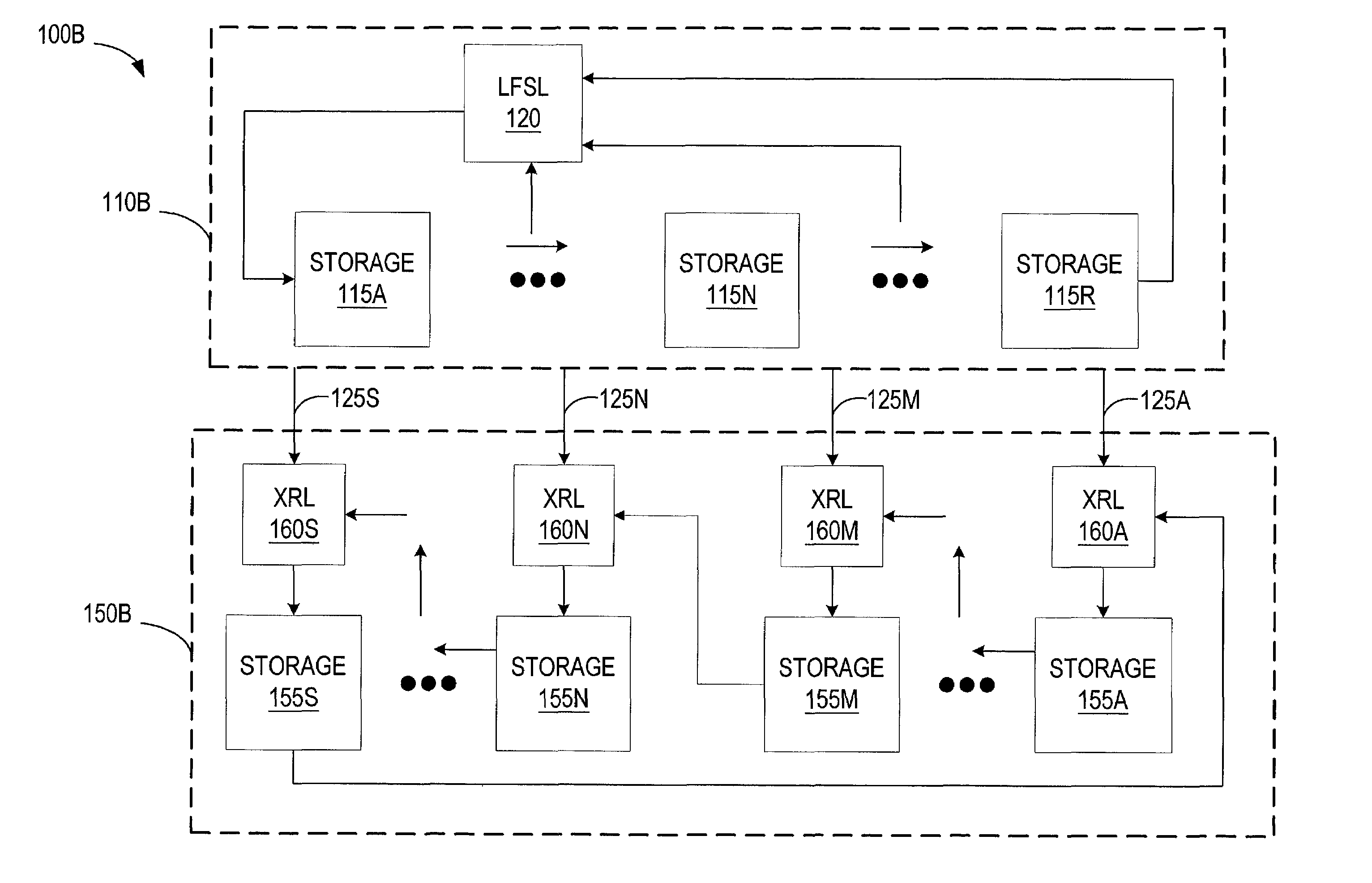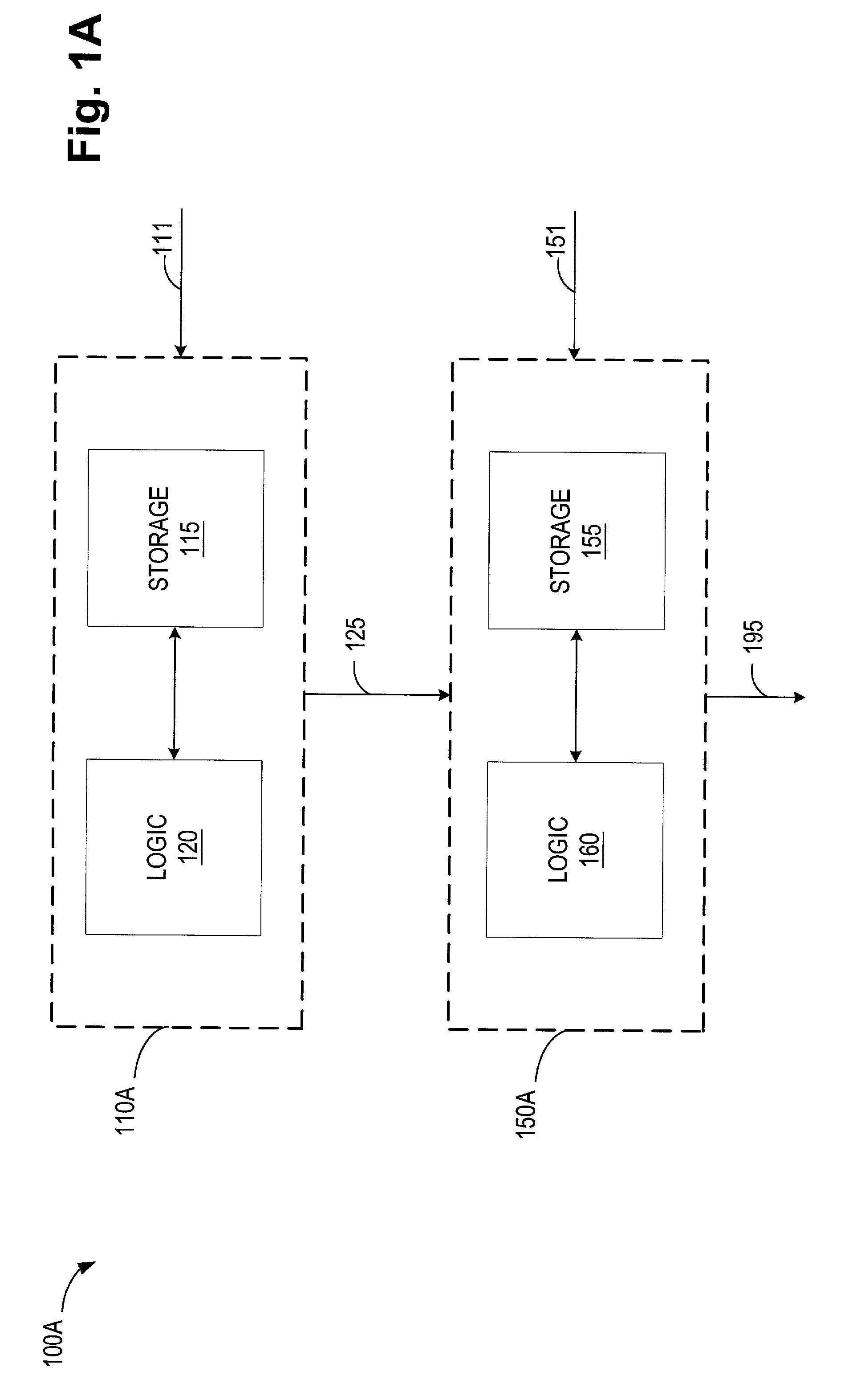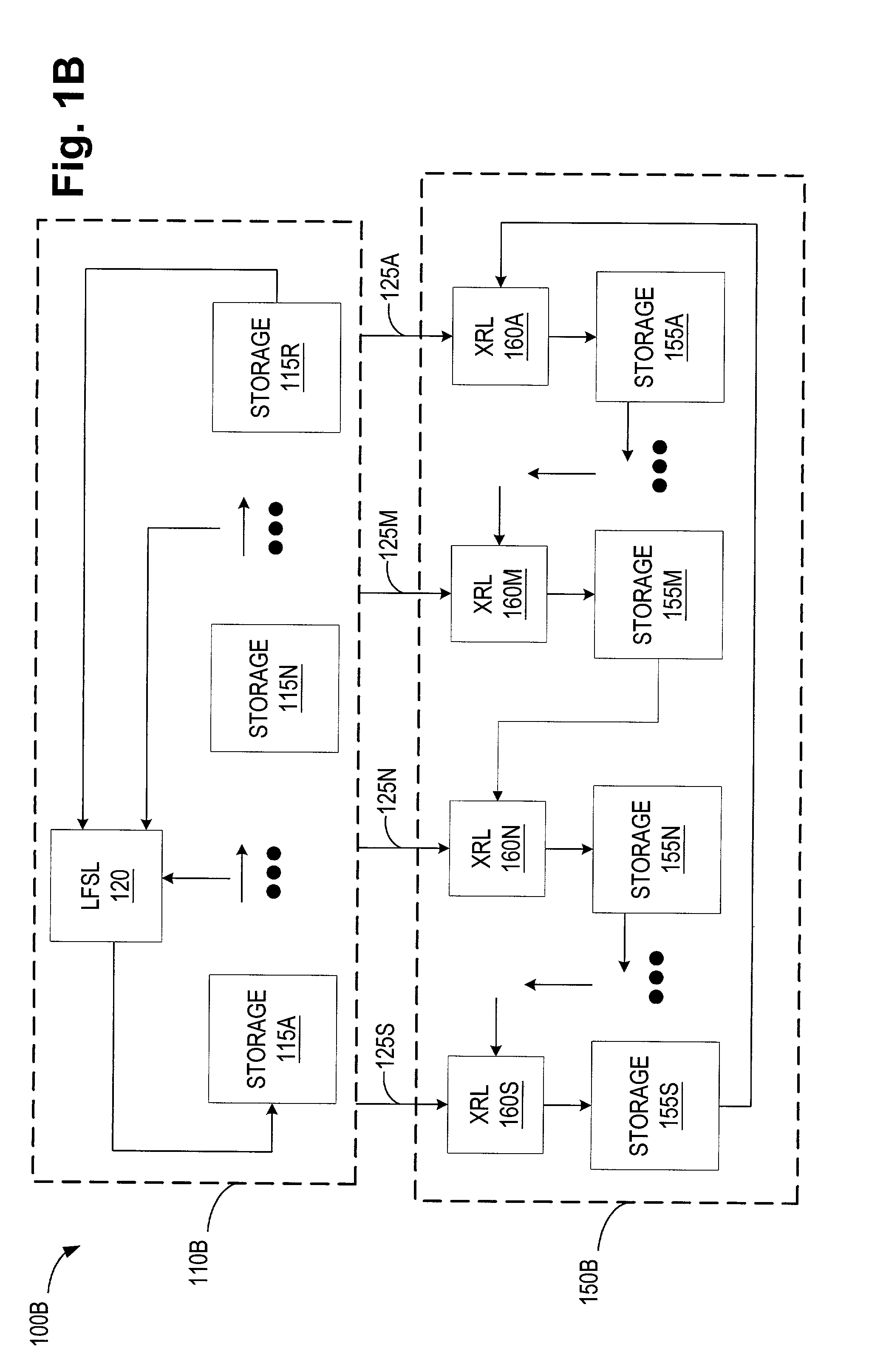Method and apparatus for generating pseudo-random numbers
a pseudo-random number and method technology, applied in the field of computing systems and electronics, can solve the problems of software algorithms that are usually relatively slow and employ processes that are usually difficult to reliably implemen
- Summary
- Abstract
- Description
- Claims
- Application Information
AI Technical Summary
Benefits of technology
Problems solved by technology
Method used
Image
Examples
exemplary embodiment 200
[0055]Turning to FIG. 2, a block diagram of a first exemplary embodiment 200 of the XOR pseudo-random number generator 100B of FIG. 1B, in accordance with one aspect of the present invention, is illustrated. Note that where FIGS. 1A and 1B use reference numbers in the 100s, FIG. 2 uses reference numbers in the 200s, but the tens and ones places correspond for ease of comparison.
[0056]As shown in FIG. 2, the XOR pseudo-random number generator 200 includes a linear feedback shift register 210 and an XOR register 250. The linear feedback shift register 210 provides a plurality of values 225 to the XOR register 250. Note that as shown, three potentially different values are provided as five values 225. The linear feedback shift register 210 includes three storage locations (collectively 215), labeled from left to right, and an XOR gate as a linear feedback shift logic 220. The datum stored in the storage location 215(1) is updated each iteration from the linear feedback shift logic 220 ...
exemplary embodiment 300
[0075]Turning to FIG. 3, a block diagram of a second exemplary embodiment 300 of the XOR pseudo-random number generator 100B of FIG. 1B in accordance with one aspect of the present invention is illustrated. Note that where FIGS. 1A and 1B use reference numbers in the 100s and FIG. 2 uses reference numbers in the 200s, FIG. 3 uses reference numbers in the 300s, but the tens and ones places correspond for ease of comparison.
[0076]As shown in FIG. 3, the XOR pseudo-random number generator 300 includes a linear feedback shift register 310 and an XOR register 350. The linear feedback shift register 310 provides a plurality of values 325 to the XOR register 350. Note that as shown, thirteen (13) potentially different values are provided as seventeen (17) values 225. The linear feedback shift register 310 includes 13 storage locations (collectively 315), labeled from left to right, and three XORs as linear feedback shift logic 320. For N>1, the datum stored in the storage location 315(N) i...
PUM
 Login to View More
Login to View More Abstract
Description
Claims
Application Information
 Login to View More
Login to View More - R&D
- Intellectual Property
- Life Sciences
- Materials
- Tech Scout
- Unparalleled Data Quality
- Higher Quality Content
- 60% Fewer Hallucinations
Browse by: Latest US Patents, China's latest patents, Technical Efficacy Thesaurus, Application Domain, Technology Topic, Popular Technical Reports.
© 2025 PatSnap. All rights reserved.Legal|Privacy policy|Modern Slavery Act Transparency Statement|Sitemap|About US| Contact US: help@patsnap.com



